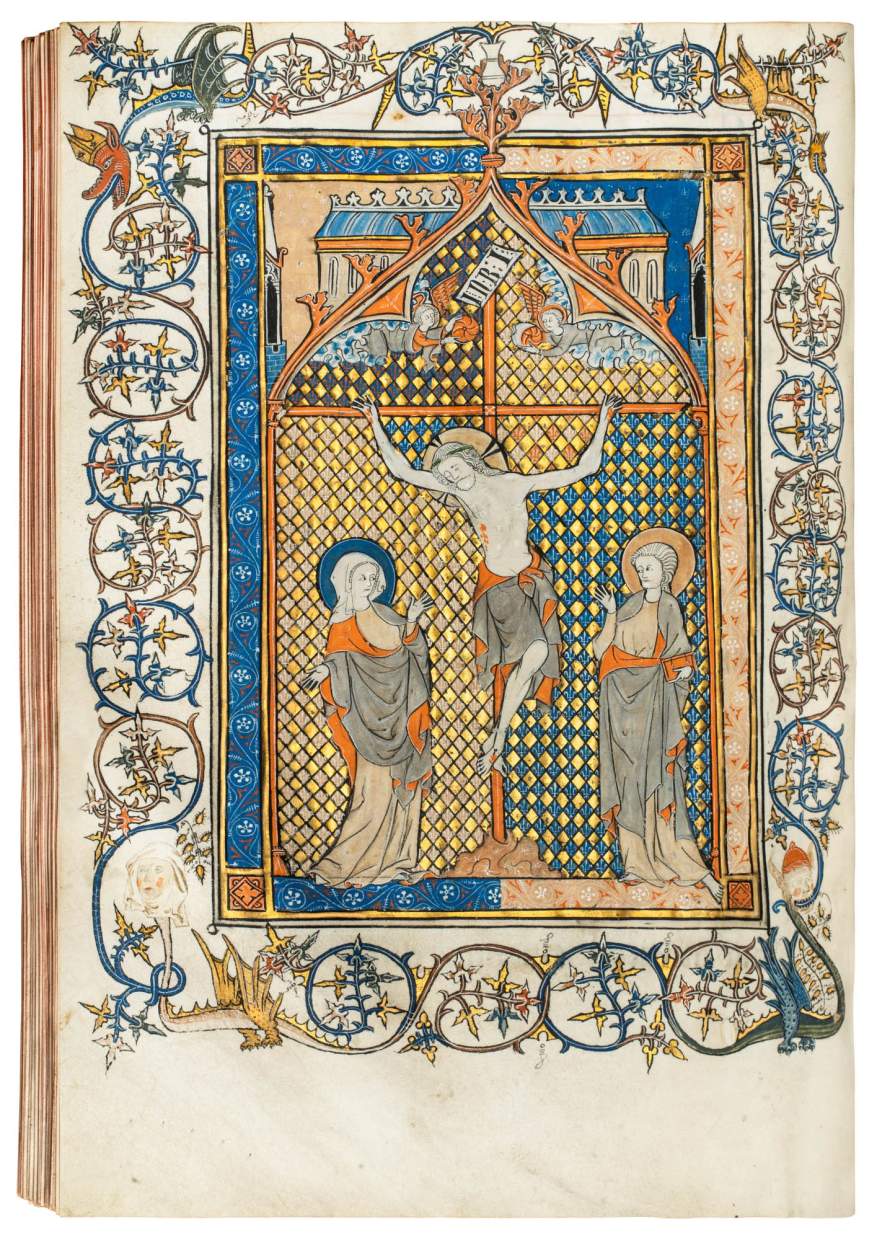

Crucifixion (Canon of the Mass), Missal for Soissons, 1250-1275, France, f. 79v
Hide caption












This work is now sold.
The survival of 13th-century Missals with this extravagant level of decoration is extremely rare. Usually read at an altar and seen by few people, Missals seldom had many miniatures. In this respect, our book is exceptional.
The accomplished illuminations in this manuscript are by an artist called the Vincent Master, who worked for patrons in Soissons, Laon, and Noyon.
The twenty-two elegant historiated initials are executed in two slightly different ways: five miniatures present scenes against a burnished gold backgrounds with bold colours and expressive faces. The other miniatures are characterised by a subtle use of hues and tones, elaborate gilded knotwork in the initial letter, and complex diaper backgrounds. All historiated initials are accompanied by marginal decoration: bars in burnished gold and colours, emanating from the illustrated letters and spanning the full length of the page. These tendrils mostly end in foliate decoration inhabited by many peculiar creatures such as hybrids, hunters, and various animals. Likewise, the faces in all historiated initials (and most faces in the marginal decorations, one exception discussed below) are given depth and expression with the delicate use of red pigments, indicating that they are all the work of the same artist, the Vincent Master. The majestic Crucifixion (f. 79v) is presented as a full-page composition. The Vincent Master was responsible for the elegant central illustration, while the elaborately decorated margins are by a different hand. Christ hangs on a delicate orange cross, flanked by the Virgin and John the Evangelist. Above, two angels hold the moon and the covered sun, a reference to the unnatural eclipse during the Crucifixion at the moment of Christ’s passing. The illuminator seems to enjoy the intricate handling of colours and patterns. The diaper backgrounds are always slightly diverse, which gives the compositions an immense playfulness and elegance.
Sewing holes from the (now lost) protective curtains over the miniatures testify to how prestigious this book has always been considered. The princely rebinding was provided while the book was in the library of Charles-Joseph de Ligne, who had his gilt arms incised on the cover. De Ligne was an important figure in the political landscape of the 18th and early 19th centuries: he travelled on diplomatic missions with Catherine the Great and corresponded with Voltaire, Rousseau, and Goethe. He can thus be counted among the greatest bibliophiles of his time.



